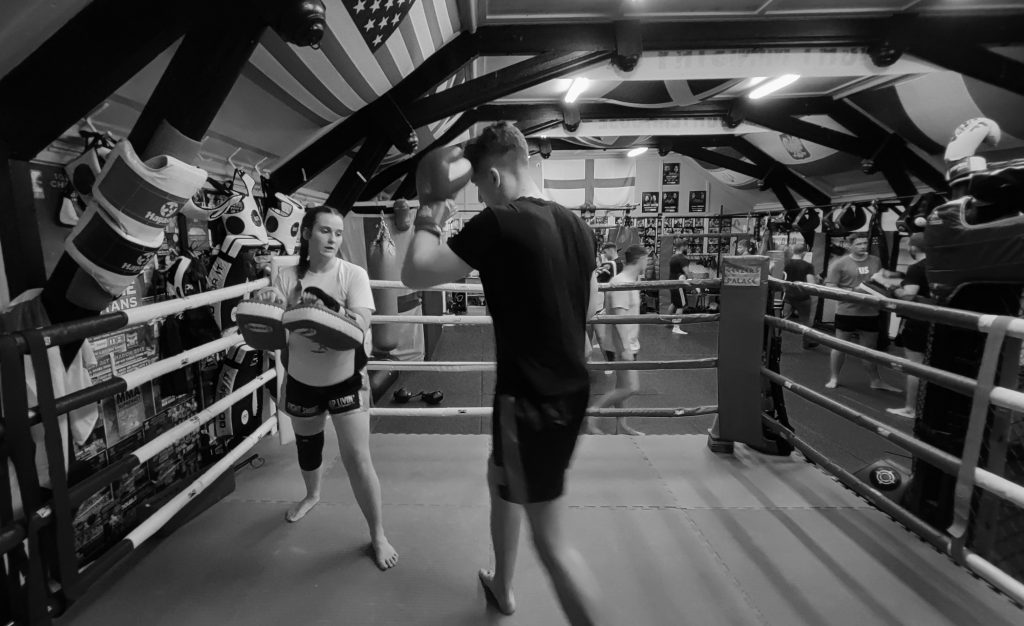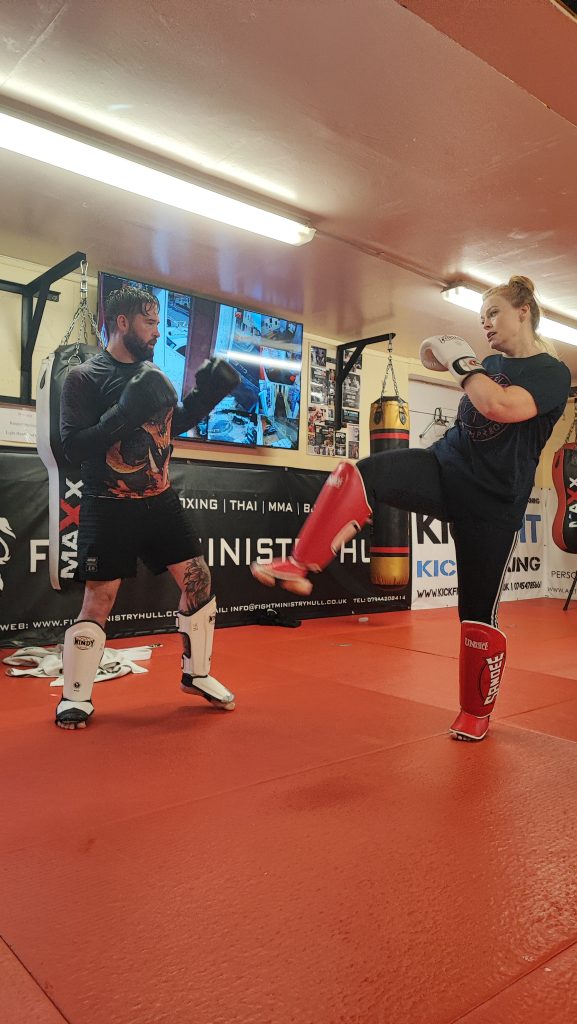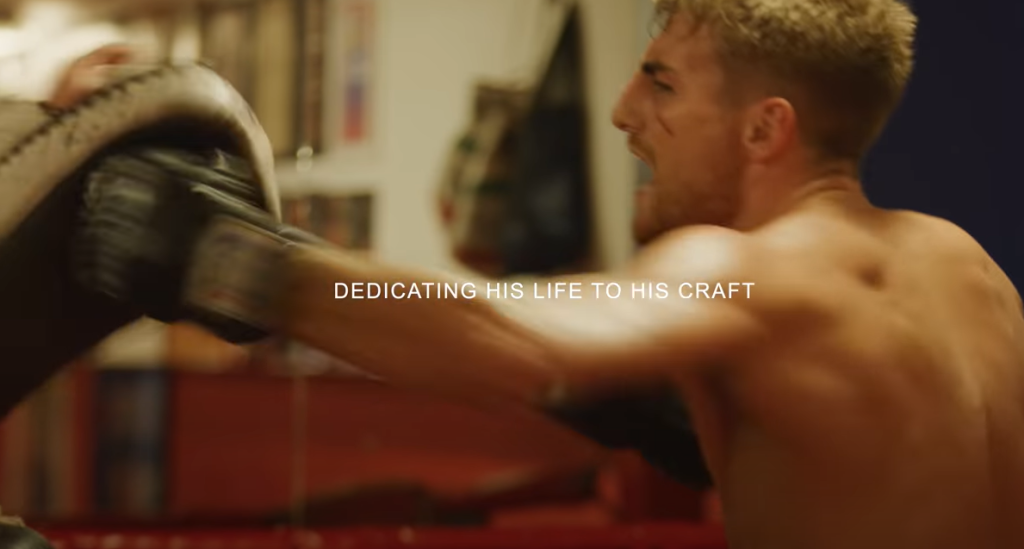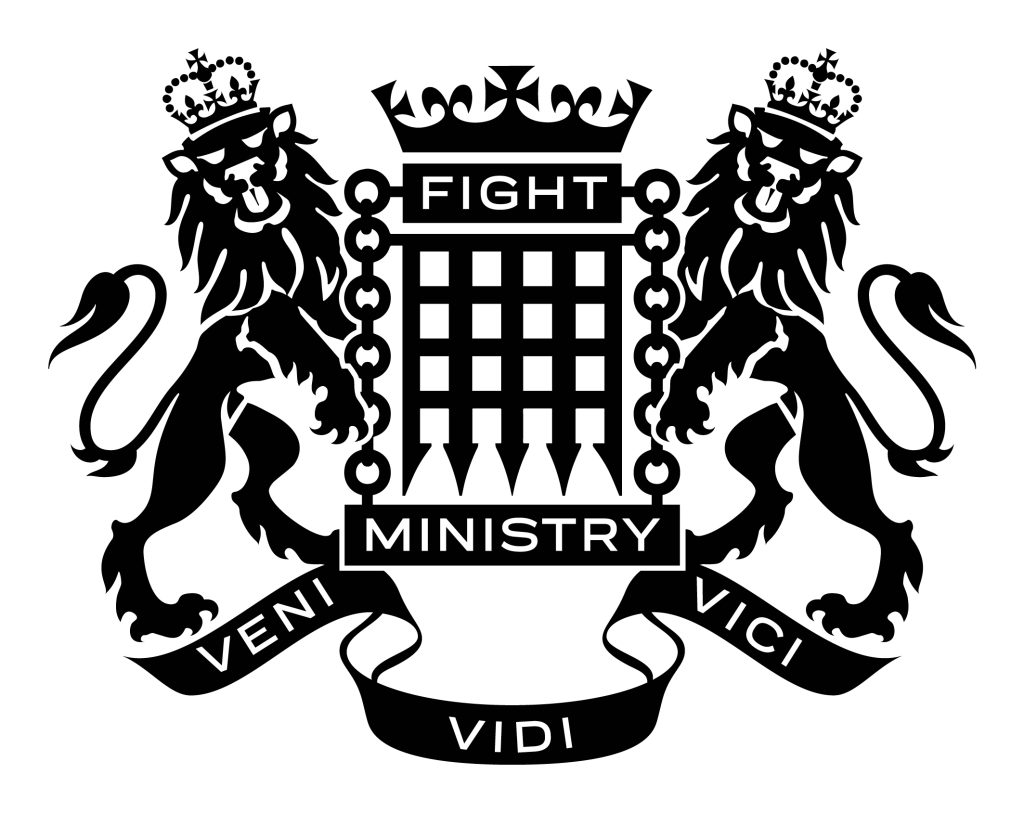Fight or Flight, Can We Physically Conquer Our Mental Health Issues?
Introduction
Fight Ministry Hull, referred to as FM, is a non-profit community gym in the heart of Kingston Upon Hull. The gym facilities and coaches provide a safe community space for individuals of all ages and levels of experience to learn a selection of martial arts and improve their general fitness.
The project is a documentary featuring the members of a community mixed martial arts gym “Fight Ministry Hull”, which seeks to explore the following statement;
Participating in physical activity for a minimum of 30 minutes or more 2/3 times a week will have long-term beneficial effects on a person’s physical and mental health and well-being.
Overall Aims
The overall aim of the documentary is to explore the tangible physiological and psychological benefits attained through regular attendance at a community gym, the documentary will draw on anecdotal evidence from a number of participants to support the aims.
The documentary will explore how participating in exercises could be an aid or alternative form of treatment for patients suffering from mental illnesses. It will also highlight some of the key shortfalls in mental health and social services, especially during the recent Covid pandemic.

According to a recent 2022 study published by the Mental Health Foundation and the London School of Economics and Political Science (LSE) “Mental health problems cost the UK economy at least £117.9 billion” and “Across the UK there were 10.3 million recorded instances of mental ill health over a one-year period, and the third most common cause of disability was depression.” The results from this documentary will explore the theory that regular exercise in an accessible, communal, non-stigmatising, friendly, and welcoming safe space can be considered an aid or even an alternative to traditionally prescribed treatments.
Current cutbacks to the NHS mental health services could create alternative alliances with these agencies to prescribe and refer patients to community gyms to trail exercise as a treatment. This is suggested by (Pamela Raine) in The Development of a Community Gym for People with Mental Health Problems: Influences on psychological accessibility “The community setting avoids many of the less obvious trappings associated with illness and hospital life familiar to many ex-patients; such as the antiseptic smell and the seemingly endless corridors”
This statement is supported by the publications of Dr Brian Moore. He is a psychologist and researcher, his Ph.D. publication (The effect of martial arts training on mental health outcomes: A systematic review and meta-analysis) investigated the relationship between physical activity (martial arts) and wellbeing/mental health. A quote from the conclusion of the study supports the statement that the documentary will explore; “Martial arts training improves wellbeing and reduces the symptoms associated with internalising mental health issues are important findings, as they suggest martial arts training may be an efficacious alternative to traditional psychological treatments.” (2020 Page 410.)
References
(Online Journal) https://www.tandfonline.com/doi/epdf/10.1080/096382301200041452?needAccess=true (The development of a community gym for people with mental health problems: Influences on psychological accessibility) (Pamela Raine et al) Published 06 Jul 2009 (Accessed 30/10/23)
(Online Journal) https://www.sciencedirect.com/science/article/pii/S1360859220300966?casa_token=ks1OZbdb40AAAAAA:BSkoOsbHG8gvNfvXs5E-0FkoEgnhL1yAyu7W5tDb2WzdgbS5QgJz4uqkAXGsYMvBEyB541ZczNLG (The effect of martial arts training on mental health outcomes: A systematic review and meta-analysis) (Brian Moore, Dean Dudley, Stuart Woodcock) Published 7 June 2020 (Accessed 30/10/23)
(Online) https://www.nwpopulationhealth.nhs.uk/posts/the-economic-case-for-investing-in-the-prevention-of-mental-health-conditions-in-the-uk-update/ The economic case for investing in the prevention of mental health conditions in the UK Update – North West Population Health and Prevention Network Published 25 May 2023 (Accessed on 02/11/23)
List of Aims
- To create a documentary documenting the benefits of taking part in a mixed martial arts or fitness activity at a community gym
- Explore the benefits of the physical health of participants
- Explore the benefits of the psychological health of participants
- Explore the social benefits of participants
- Explore the possibility of forming alliances with community agencies or GPs to prescribe exercise as an alternative or aid to treat mental illnesses
- Explore the marketing benefits for the gym as a result of producing the documentary
The Benefits of Regular Exercise on Physical and Mental Health
The term martial arts can be used to describe the collection of combat arts that originally developed in Eastern cultures.
The most commonly recognised and practiced martial arts are listed below, some of which are in the Olympic Games;
- Boxing
- Brazilian Jiu Jitsu
- Karate
- Kickboxing
- Judo
- Muay Thai
- Tae Kwondo
- Wrestling
In the publication, Martial Arts as Sport and Therapy the author (Burke, D T) states “Martial arts were developed with the focus on waging wars. In the modern context it has evolved to systems of hand-to-hand fighting, self-defense, and sport.” that “Styles in martial arts, in particular those which include punches and kicks, may be characterized as either “external/hard styles” or “internal/soft styles.”
The mind map below demonstrates a collection of ideas about the tangible benefits of exercise on a person’s physical and mental health. The documentary will focus on and draw from the ideas highlighted in green and bold in the mind map.

Reference
(Online Journal) https://www.proquest.com/docview/202676619?pq-origsite=gscholar&fromopenview=true Martial Arts as Sport and Therapy the author (Burke, D T) Published on March 2007 (Accessed 02/11/23)
How are Participants Selected
The film will observe a range of male and female individuals, with varying age ranges and different experience levels from beginners to professional athletes and gym staff members. This is to ensure data is representative of a wide range of individuals. The participants will be identified face-to-face during discussions at the gym and invited to take part.
Participants will take part over a number of months (estimated January to February 2024) using a series of individual visually recorded interviews.

Data Protection
The participants will be made aware of how their data will be securely stored and the purposes of the study. They will have regular access to the primary researcher and have the ability to withdraw from the documentary at any point during the process.

Benefits and Purpose of the Documentary
The documentary will seek to encourage people to learn martial arts and embrace alternative long-term solutions to combat mental illness and improve general fitness as an aid or possible alternative to current medical treatment methods.
The possible results can be supported by the statement by the author (Pamela Raine) in The Development of a Community Gym for People with Mental Health Problems; “The community setting avoids many of the less obvious trappings associated with illness and hospital life familiar to many ex-patients; such as the antiseptic smell and the seemingly endless corridors.” (2002, page 46)
The mind map below demonstrates some of the intended purposes and benefits of the documentary, with the highlighted text being the most valuable outcomes.

Social benefits include reducing anti-social behavior by exploring the importance of community-based exercise facilities. The availability of communal training facilities creates a safe space for individuals to practice discipline and consistency in learning a martial art. This discipline practiced through regular training sessions provides numerous opportunities for personal growth in a variety of martial arts and general fitness.
Economic benefits on a small and local scale for the Fight Ministry gym may include; raising the public profile of the gym locally and therefore attracting new sponsors and investors. This would improve the current facilities as well as an increase in the regular monthly gym memberships. On a larger scale challenge local authorities nationwide to consider funding similar schemes.
Similar Successful Schemes; Applied Research
Applied Research
Weapons Down Gloves Up – Liverpool
Weapons Down Gloves Up in Liverpool is a scheme available in region-wide gyms. It has received a large amount of media coverage due to its use of high-profile boxers (Tony Bellew) and MMA fighters (Molly McCann). The classes are aimed at youths aged 14-21, teaching them martial arts with the aim of reducing crime, providing learning, education, and employment opportunities.
Primal Combat Academy – Clacton on Sea
The Primal Combat Academy has collaborated with a local community charity (Futures in Mind) to provide support classes designed for individuals with mental health issues and substance abuse. This partnership continues to be successful, with some members even advancing their skills to compete in competitions.
References
(Online) Home, Weapons Down Gloves Up https://wdgu.co.uk/ Published 2023 (Accessed 28/10/23)
(Online) Home, Primal Combat Academy https://www.clactonandfrintongazette.co.uk/news/19491375.clacton-martial-arts-gym-helps-people-mental-health-issues/ Published 2023 (Accessed 29/10/23)
Workflow Planning
Below is a Gantt chart that documents the timeline of the different tasks involved in creating the documentary. Each task has its own duration which breaks each task down into manageable smaller projects which all contribute to the final finished project. The chart is a live document that will be accessible throughout the project, this will accommodate any contingencies in the timeline, e.g. some deadlines may be extended/reduced or items added to the current task list.

Equipment
The documentary will be a high-production piece, therefore the best available equipment will be used to create this. The equipment used in the documentary is listed below,
Itemised list
- Professional DSLR Camera – Sony A7
- Audio Equipment -audio adapters for attachment on the camera, clip-on microphone (to be concealed on the participant)
- Lighting – portable constant lights or use of reflector for use with natural lighting
- Tripods for camera and audio equipment
- Large memory internal computer storage
- Adobe software for editing footage and creating the final documentary.
Storyboard
The storyboard is a low-fidelity live draft of the filming and sequences of the documentary, it can be added to as the project develops. The intended documentary will use different lighting, movement, interviews, and audio recordings to convey emotion and atmosphere. The range of emotions will change during the documentary and will be demonstrated in the different cinematic shots as different topics are discussed in the interviews.
The opening scene will show the quiet empty gym in the morning, using dim natural morning lighting to create mood. Cinematic shots of the training equipment and rooms will accompany the participant interviews, such as intimate shots of an individual wrapping their hands before sparring. As the documentary progresses the theme and music will change, with the last storyboards being positive and upbeat. The closing scenes will show the gym closing for the night with evening lighting or lights being turned off, signaling the end of the documentary. The end credits and music will be upbeat to convey the positive influence of the gym on the participants.
Location Observation and Planning
All interviews and filming will take place at Fight Ministry. Some examples of the locations of interviews and shots are demonstrated below.
Lighting

There are two floors at Fight Ministry, each with different spaces and lighting available. Some challenges to be addressed would be the lack of natural lighting, especially during the winter months. During filming, (January-March 2023) extra precautions, one example is shown above in one of the rooms where participants will be interviewed and filmed, extra lights or reflectors will be used to combat the artificial lighting.
Audio Recording
The interviews will be conducted with as minimal disruption as possible, this will involve organising interviews when there are no current classes and during quiet times (early morning). The different training rooms are almost all being padded so there is less likelihood of echo in the audio recording.


Influences
The documentary Hitting To Hurt – Muay Thai Documentary: Jonathan “The General” Haggerty is influential to the FM documentary, some desirable aspects include;
- Intimate and personal interviews with a shallow depth of field
- Action footage of training with descriptive subtitles
- Stylistically consistent dark atmospheric gym lighting
- Opportunity to give the viewer a detailed window into the reality of the daily life of training to be a world champion



References
(Online) Hitting To Hurt – Muay Thai Documentary: Jonathan “The General” Haggerty, The Mulligan brothers (Published 05 Nov 2021) (Accessed 02/11/23)
References
(Online Journal) https://www.sciencedirect.com/science/article/pii/S1360859220300966?casa_token=ks1OZbdb40AAAAAA:BSkoOsbHG8gvNfvXs5E-0FkoEgnhL1yAyu7W5tDb2WzdgbS5QgJz4uqkAXGsYMvBEyB541ZczNLG (The effect of martial arts training on mental health outcomes: A systematic review and meta-analysis) (Brian Moore, Dean Dudley, Stuart Woodcock) Published 7 June 2020 (Accessed 30/10/23)
(Online Journal) https://www.tandfonline.com/doi/epdf/10.1080/096382301200041452?needAccess=true (The development of a community gym for people with mental health problems: Influences on psychological accessibility) (Pamela Raine et al) Published 06 Jul 2009 (Accessed 30/10/23)
(Online) https://www.nwpopulationhealth.nhs.uk/posts/the-economic-case-for-investing-in-the-prevention-of-mental-health-conditions-in-the-uk-update/ The economic case for investing in the prevention of mental health conditions in the UK Update – North West Population Health and Prevention Network Published 25 May 2023 (Accessed on 02/11/23)
(Online Journal) https://www.proquest.com/docview/202676619?pq-origsite=gscholar&fromopenview=true Martial Arts as Sport and Therapy the author (Burke, D T) Published on March 2007 (Accessed 02/11/23)
(Online Journal) https://www.lancaster.ac.uk/fass/doc_library/apsocsci/gymreport.pdf User Participation, Mental Health and Exercise: Learning from the Experiences of Barrow Community Gym (Carole Truman, Pamela Raine) Published January 2001 (Accessed 02/11/32)
(Online) Home, Weapons Down Gloves Up https://wdgu.co.uk/ Published 2023 (Accessed 28/10/23)
(Online) Home, Primal Combat Academy https://www.clactonandfrintongazette.co.uk/news/19491375.clacton-martial-arts-gym-helps-people-mental-health-issues/ Published 2023 (Accessed 29/10/23)
(Online) Hitting To Hurt – Muay Thai Documentary: Jonathan “The General” Haggerty, The Mulligan brothers (Published 05 Nov 2021) (Accessed 02/11/23)




